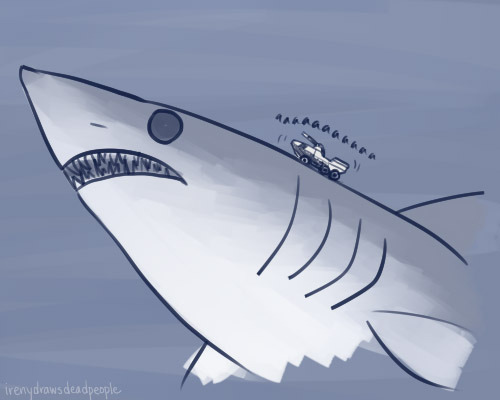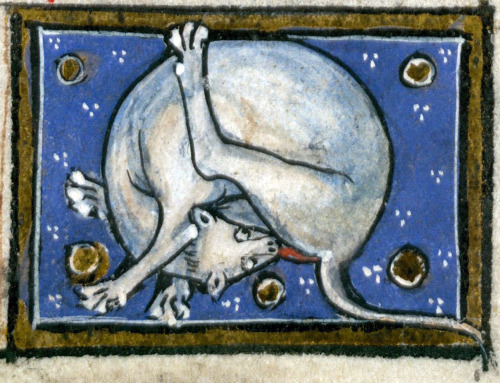First, A Note: I Ask That People Please Reblog This To Spread This Since The Tags Are Kinda Unusable
First, a note: I ask that people please reblog this to spread this since the tags are kinda unusable right now, especially when a post has external links within it.
Dreamwidth has been my main active posting platform for a year and a half now, and I’ve noticed a lot of bloggers talking about jumping ship over to DW with tumblr’s uhhhhhh current state of affairs.
But DW is kinda bland and boring if you’re too young to have been of the LiveJournal generation, and therefore don’t know where to look or start in order to build your friends list and find communities, so I’m going to do some of the legwork for you.
the_great_tumblr_purge: I made a dw community specifically for people jumping ship from tumblr to reconnect with each other.
addme: a friending community where you pimp yourself out and find other people with similar interests that you might want to see on your reading page.
addme_fandom: similar to above, only with a stronger emphasis on finding people based on your fandoms.
fandomcalendar: a community where you can find fandom events, such as big bangs, exchanges, challenges, bingos, etc. and other fandom communities that might suit your interests.
questionoftheday: for when you don’t know what to post.
If anybody else has communities they want to add, go right ahead and add them in a reblog.
Please reblog this.
More Posts from Bookherd and Others

Tlingit War Helmet Rediscovered after 100 years
A fantastic Tlingit war helmet has been recently rediscovered in the backroom of a museum in Springfield, Massachussests. The helmet was accessioned in 1899 as an “Aleutian hat” and the designation was never questioned until now.
The article also contains a neato painting by Ketchikan artist Ray Troll and, amidst a really fascinating batch of comments, a pic of a helmet modeled after someone with Bell's Palsy.


It's on like Kong.
(more amazing underpants here)

Female Sailor blind in one eye reveals how she got her male attire and gig aboard the ship by going “”to a dealer in sailor’s clothes, enjoining upon him the utmost secrecy, who furnished me with sufficient clothing, and rendered me every assistance in his power to forward the object I had in view. He even procured me employment on board of a vessel which was soon to sail for New Orleans, and whispered a good word for me to the captain of the vessel.” (1841)
Image courtesy of American Antiquarian Society

Also, here’s a video version with sound.


mako with mako in the mako on a mako
Update: $28,136 raised from 836 supporters. They're taking extra care (and expense) to make sure the baboons are treated as well as possible.
Dear Tumblr,
In the next few years there could be an affordable, multi-year, reversable, non hormonal male contraceptive. You’re Tumblr, so I’ll assume you have some idea of the many many reasons this would be glorious (despite the fact that no, it doesn’t protect against stds), but it needs you and your incredible news spreading power to make it a reality. All that’s left are the last round of animal testing and clinical trials (baboons!), but because pharmaceuticals aren’t eager to fund the end of the pill, the project lacks sufficient funding. They’ve got $14,990 from their first 413 contributors, but their website asks for public support in donations of any size to help reach their $60,000 goal— even if it’s only $5 or 10. So how ‘bout it— 20oz Blueberry Mocha, or greater gender equality in respect to ‘family planning’? More information here or here. Direct to paypal here
Free "Fast Runner"! Thanks, Internets!





Atanarjuat; the Fast Runner - the first feature film ever to be written, directed and acted entirely in Inuktitut.
Available streaming or download here (along with the other two of the Fast Runner trilogy).
Submission of Good Cheer
dicksihavestudied submitted to medievalpoc:
I apologize if you already have this, but I think you might want this cat licking its butt as a medieval reaction.
Thomas of Cantimpré, Liber de natura rerum, France ca. 1290.
Valenciennes, Bibliothèque municipale, ms. 320, fol. 72r

I think this just stands on its own, to be honest. I know my day just got a little brighter.
SAINT NICHOLAS WAS BLACK.




Various Artists
Saint Nicholas (Nikolaus, Bishop of Myra)
Nicholas, was probably born during the third century in the village of Patara, in what is now the southern coast of Turkey. He was born of very wealthy ethnic black Anatolians of the ancient Roman Empire.
Nicholas’ wealthy parents died in an epidemic while Nicholas was still young. Being a devout Christian, he followed the words of Jesus to “sell what you own and give the money to the poor.”

Nicholas used his whole inheritance to assist the needy, the sick, and the suffering. He was made the Bishop of Myra while still a young man. The high office of Nicholas at such a young age speaks to dominant role played by black Anatolians and Africans in creating the church as we know it today. Bishop Nicholas was known throughout the land for his generosity to the those in need, his love for children, and his concern for sailors and ships.
Under the Roman Emperor Diocletian, Bishop Nicholas suffered for his faith, was exiled and imprisoned.
After his release, Nicholas attended the Council of Nicaea in AD 325, where he worked with other early fathers of the church to establish the standardized christian doctrine of today. He died December 6, AD 343 in Myra and was buried in his cathedral church, where a unique relic, called manna, formed in his grave.

The remains of Saint Nicholas are interred in the crypt of the Basilica di San Nicola in Bari, Italy. These bones were temporarily removed when the crypt was repaired during the 1950s. At the Vatican’s request, anatomy professor Luigi Martino from the University of Bari, took thousands of minutely-detailed measurements and x-ray photographs (roentgenography) of the skull and other bones.
The current professor of forensic pathology at the University of Bari, Francesco Introna, knew advancements in diagnostic technique could yield much more from the data gathered in the 1950s. So he engaged an expert facial anthropologist, Caroline Wilkinson, at the University of Manchester in England, to construct a model of the saint’s head from the earlier measurements.


Using this data, the medical artist used state-of-the-art computer software to develop this model of St. Nicholas.
1. Saint Nicholas, c. 1760. Egg tempera on wood with metal riza (possibly silver), 10½” x 12½”. Museum of Russian Icons, Clinton, MA. [x]
2. Sassetta, The Virgin with Four Saints (Saint Nicholas detail). c. 1435, Tempera on wood. Museo Diocesano, Cortona. [x]
3. Velikiy Novgorod, The Funeral of Saint Nicholas. c. 1200s. School of Novgorod. [x] [x]
4. Niklaus of Myra, Unknown Russian Icon painter, pre-1000s.
Reconstruction of Saint Nicholas [x]
[x] [x]
-
 queenmycrofts liked this · 1 year ago
queenmycrofts liked this · 1 year ago -
 castielyre liked this · 1 year ago
castielyre liked this · 1 year ago -
 racingpit liked this · 1 year ago
racingpit liked this · 1 year ago -
 terpyvoner liked this · 1 year ago
terpyvoner liked this · 1 year ago -
 icantstoplookingatcatssendhelp reblogged this · 1 year ago
icantstoplookingatcatssendhelp reblogged this · 1 year ago -
 elyxir liked this · 2 years ago
elyxir liked this · 2 years ago -
 apastandfuturenerd liked this · 3 years ago
apastandfuturenerd liked this · 3 years ago -
 byrd3300 liked this · 3 years ago
byrd3300 liked this · 3 years ago -
 ja-no-definitely liked this · 3 years ago
ja-no-definitely liked this · 3 years ago -
 fpsfr reblogged this · 3 years ago
fpsfr reblogged this · 3 years ago -
 learningvariousshit reblogged this · 3 years ago
learningvariousshit reblogged this · 3 years ago
65 posts
